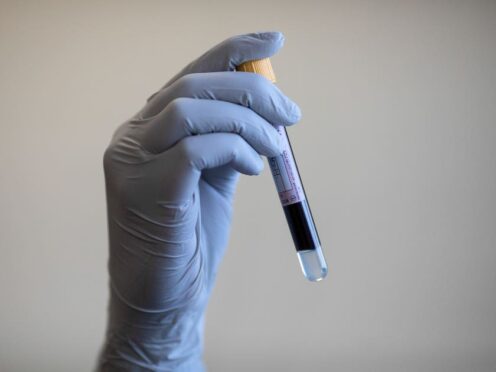A young Black Isle woman who battled for three years to get a Lyme disease diagnosis is continuing her fight to raise awareness of the illness – and she plans to write a second book about it.
Morven-May MacCallum, of Tore, says the condition left her practically housebound for eight years and is still “very much dominating her entire life”.
She says doctors have a difficult task because they are being pressurised to rely on tests that are inaccurate, so they don’t always feel confident enough in making a clinical diagnosis.
In the last six months, the 24-year-old has put all her energy into giving talks at bookshops across the north – from Ullapool to Nairn and Huntly – and engaging with the public at festivals like Belladrum.
Book stores have so far stocked 700 copies of her debut novel, Finding Joy, a work of fiction about the suffering of a young woman and her family trying to find out what is wrong with her, mirroring some of Miss MacCallum’s own experiences.
She said: “The response to the book has been incredible.
“It’s been quite shocking the things I’ve been hearing about how long it’s taken to get a diagnosis and the way people have been treated by the medical establishment, and how a wrong diagnosis has meant ongoing permanent damage because someone has not been diagnosed early enough.
“There is a lack of knowledge in doctors on the subject and I don’t think doctors understand the magnitude of the impact this has on patients. There is a lack of empathy and understanding. There are also several co-infections that come with Lyme disease which are very serious within themselves – but they don’t test for them.”
Lyme Disease UK found that less than 3% of GPs have completed the free Lyme Disease Association/Royal College of General Practitioners course on Lyme disease.
Miss MacCallum first noticed her symptoms aged 15 – but was misdiagnosed with ME and chronic fatigue syndrome three times by a local GP, a medic at Raigmore Hospital in Inverness and a specialist in Glasgow.
She was forced to drop out of school aged 16 due to severe exhaustion, memory loss and concentration lapses caused by the illness.
Acitivities she had always enjoyed – climbing Munros, swimming, jogging and cycling – tailed off and even the simplest tasks became too difficult. At the age of 19, she was correctly diagnosed by a private doctor in England after blood samples sent to specialist units in Germany and the US tested positive for Lyme disease.
But by this point, she was too exhausted to make further journeys to England to be given the first three to six months of treatment.
Instead, her mother, who is a nurse, administered the antibiotics at home by injecting them into her daughter’s hip.
Despite years of hardship, Miss MacCallum has made good progress in the last year, and she passed her Higher English exam in August after taking a distance learning course.
The aspiring writer said: “I’ve got some ideas for a potential follow-on book to Finding Joy. I feel there’s still so much more to be explored on the subject.
“There are plenty of books out there about having an illness, but very few about the recovery.
“I think if I can get more people knowledgeable on the subject, they will hopefully be able to prevent more people from becoming unwell, and the more interest in Lyme disease the more chance of further research into the subject.”
Lyme Disease UK conservatively estimates that there are about 3,000 new cases of Lyme in the UK each year.
The organisation says that catching it early is important, as this usually makes the illness much easier to treat.










